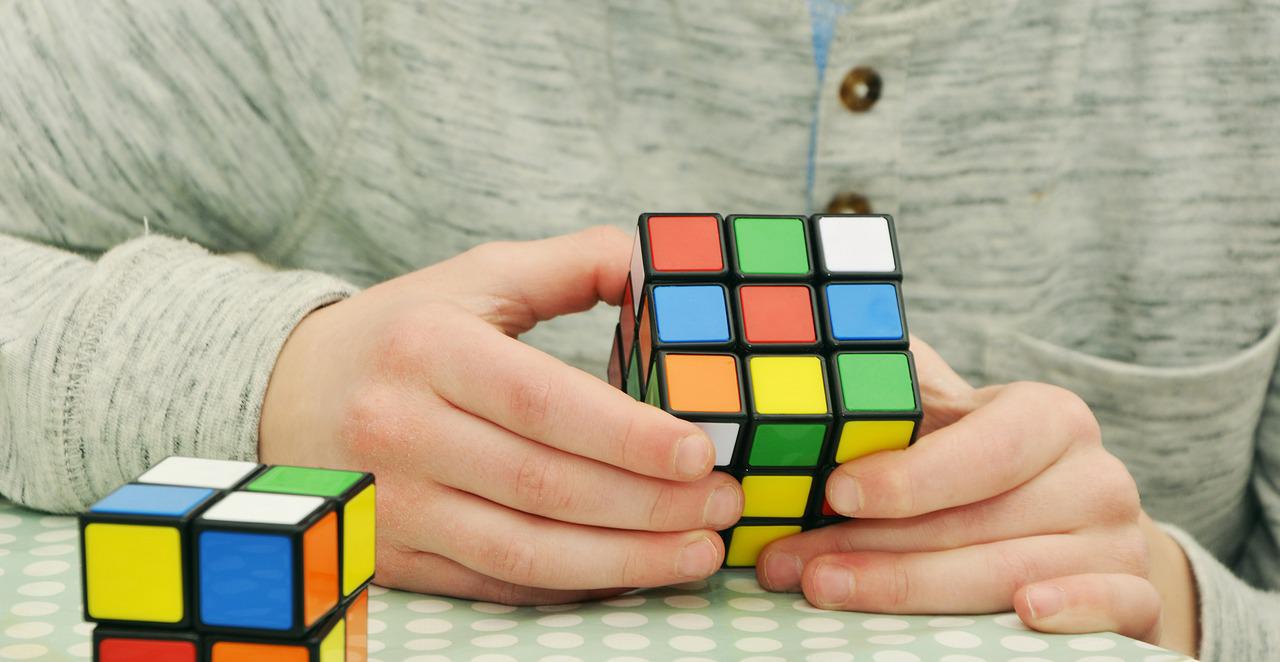Erno Rubik is famous guy who became one of the richest men in Hungary thanks to a toy he developed. So what kind of toy it was and how he became so rich by selling it? Let’s get in to this and uncover all mystery!!
The world is packed wealthy people. Some have earned it while others have inherited it. But friends have you heard of someone who became rich because of a toy? Yes, we are talking about famous and well-known Hungarian inventor, architect and professor of architecture Erno Rubik who became one of the richest men in Hungary thanks to a toy he developed.
Erno Rubik was popular for creating the Rubik’s cube in 1974. It is a colourful 3-D combination puzzle brain exercise bestselling toy of the history. This toy was an immediate achievement internationally and became a staple of the 1980’s mainstream society. Although it is considered to be a toy, because it is similar to being a mentally stimulating puzzle, the cube is something that can be used by anyone, regardless of their age.
The Rubik’s cube has sold more than 300 million pieces all over the world making it the bestselling toy ever in all of history. Insights show that one in each 7 individuals on the planet has come in contact with the toy. Due to this colourful cube that he created, professor Rubik has become one of the most celebrated and wealthiest men in Hungary.

What Is Rubik’s Cube?
The Rubik’s cube shape and catchy design is an exemplary brain-training toy that provides a stimulus for enhancing one’s cognitive abilities. It was utilized for scientific and logical examination and innovation advancement by a few researchers. It is a famous mechanical cube puzzle that stands out far and wide because of its exceptional and unique qualities and features.
When Did Erno Rubik Invent the Rubik’s Cube?
The toy was created in 1974 by Erno Rubik and it was at first known as the Magic Cube The extraordinary attributes of this shape affected mankind quite significantly, and it is recorded among the 100 most powerful developments of the twentieth century. The Rubik’s cube dominated and won the German Game of the year special award, and it has likewise won comparative honors for the best toy in the U.S and the U.K
What Is the Use Of Rubik’s Cube?
This toy got famous during the 1980s, yet it is still extremely popular and is widely utilized even to date. The cube doesn’t just pull in its enthusiast exploring its decreasing algorithms. It likewise draws the consideration of specialized laborers and researchers from different backgrounds. It has an advanced design, structure and ideas along with various other characteristics, for example, combinations, permutation, rotation, symmetry and cycle. It proved to be a valuable device for showing logarithmic and algebraic group theory.
The features were treated as physical instruments and models for the investigation of explicit logical and scientific issues. The investigation included utilizing logical strategies or speculations in certain regions. Different trial frameworks that incorporate symmetries and cyclicality, combinations and permutations contain the standards of Rubik’s Cube Researchers got keen on investigating the key development standards of the toy.
Each face of the cube has nine coloured squares, and it can be rearranged in forty-three quintillion different ways.
Erno Rubik Solving the Cube
It took over one month of hard exertion for Rubik to unravel and solve the shape. He started by adjusting the eight corner cubes effectively then found a few sequences of moves. He could then rework a couple of them at a time. After a lot of bending and re-twisting the cube, Erno Rubik, was at long last able to find the solution to the puzzle. He said that anybody who was inquisitive and determined could unravel the riddles, however, it is not exactly simple.
He applied for a patent in Hungry on his cube in 1975. In late 1977 Konsumex, Hungary’s state trading organization, started promoting it. By 1980 Rubik’s Cube was showcased all through the world, and more than 100 million approved units, with an expected 50 million unapproved imitations, were sold, generally during its ensuing three years of prevalence. Around 50 books were published portraying how to understand and solve the puzzle of Rubik’s Cube.
Erno Rubik Biography
Ernő Rubik was born in Budapest, Hungary, on 13 July 1944, during World War II. He has been living in Hungary for his whole life. His father, Ernő Rubik Sr., was a flight engineer at the Esztergom which is an aircraft factory, and his mother, Magdolna Szántó, was a poet. In pretty much every interview that he has had, he has expressed that he got his motivation from his dad.
Erno Rubik Education
He studied sculpture at the Technical University in Budapest and architecture at the Academy of Applied Arts and Design, likewise in Budapest. From 1958 to 1962, Rubik represented considerable authority in sculpture and design at the Secondary School of Fine and Applied Arts. From 1962 to 1967, Rubik went to the Budapest University of Technology where he turned into a member of the Architecture Faculty. From 1967 to 1971, Rubik went to the Hungarian Academy of Applied Arts and was on the Faculty of Interior Architecture and Design.
According to him, it was his university and higher education that molded and turned his life around. On multiple occasions, Rubik has stated that “Schools offered me the opportunity to acquire knowledge of subjects or rather crafts that need a lot of practice, persistence and diligence with the direction of a mentor.”
Erno Rubik Career
From 1971 to 1979, Rubik was teaching architecture at the Budapest College of Applied Arts (Iparművészeti Főiskola). It was during his time there that he assembled plans for a three-dimensional puzzle and finished the principal working model of the Rubik’s Cube in 1974, applying for a patent on the cube in 1975.
In the mid 1980s, he got the position of the editor of a game and puzzle journal called ‘És játék’ (And Games), and then became independently employed in 1983, establishing the Rubik Stúdió, where he designed furniture and games. In 1987 he became a teacher with full residency. Then in 1990 he was promoted to become the president of the Hungarian Engineering Academy (Magyar Mérnöki Akadémia). At the Academy, he made the International Rubik Foundation to help particularly gifted young engineers, modern planners and industrial designers.
Ernő Rubik has named a few people who, as he has stated, “exerted a great influence over me through their work.” These incorporate Leonardo da Vinci, whom Rubik views as the Renaissance man; Michelangelo, whom he regards as a polymath, painter, and stone carver; and artist M.C. Escher, who drew inconceivable developments and wrestled with investigations of infinity. As far as logicians and essayists are concerned, Rubik appreciates Voltaire, Stendhal, Thomas Mann, Jean-Paul Sartre, Hungarian artist Attila József, Jules Verne, and Isaac Asimov. In the field of design, he is an admirer of Frank Lloyd Wright and Le Corbusier.
Rubik confesses to being a deep-rooted bookworm and has expressed that, “Books offered me the possibility of gaining knowledge of the World, Nature and People.” Rubik has expressed that he has an uncommon enthusiasm for sci-fi. He is currently a member of the USA Science and Engineering Festival’s Advisory Board.
Where does Erno Rubik live
At present he is living happily in the capital city of hungry. He operates all their business deals or official accounts from Budapest and participates in many tech or art events. You can check more about this on various other websites or visit youtube for detail interview.
Erno Rubik Net Worth
He has a total net worth of $100 million, and as mentioned earlier in the article, is most popular for developing the Rubik’s Cube. According to the most recent statistics, approximately 350 million Rubik’s Cubes have been sold all around the world, making it the top selling toy ever. Till date the Rubik’s Cube has produced at any rate $5 billion in worldwide income, generally because of a licensed partnership with ‘Ideal Toys’ which is an American based toy company. At the time he created the Cube, Erno was earning $200 every month as an architecture and design teacher in Hungary.
The accomplishment of his Cube made Erno a multimillionaire at the peak of communism in a nation that was definitely not capitalist. In an instant he became the wealthiest individual in Hungary. At the point when the Rubik’s furor died down, Erno got back to his employment as a design and architecture professor at the Budapest Academy of Applied Arts. Once more, he was receiving $200 every month as income from the academy, however because of the invention of the Rubik’s Cube, his salary was enhanced with a $30,000 royalty per month. That is equivalent to around $73,000 every month today. For a long time, he needed to impart benefits to the legislature of Hungary’s Metroplex import-export firm.
In an interview in 1986, Erno stated: “In our currency, I am a multimillionaire. In dollars, I am also a millionaire, but unfortunately, I can’t say exact numbers, because I really don’t know. I do not check the bank account all the time.”
Erno Rubik Inventions
Apart from the Rubik’s Cube, other Erno Rubik inventions are Rubik’s Magic, Rubik’s Snake, Rubik’s Triamid and Rubik’s 360 among others. Read more about these beautiful inventions and facts below:
Rubik’s Magic
Rubik’s Magic, similar to the Rubik’s Cube, is a mechanical riddle designed by Ernő Rubik and first produced by Matchbox during the 1980s. The puzzle comprises of eight dark square tiles (changed to red squares with goldish rings in 1997) organized in a 2 × 4 rectangular shape; inclining grooves on the tiles hold wires that link them, permitting them to be fall onto one another, be folded and unfolded again in two perpendicular ways (given that no different connections limit the movement) in a way that is similar to the Jacob’s Ladder toy.
Rubik’s Snake
A Rubik’s Snake, also known as Rubik’s Twist, Rubik’s Transformable Snake or Rubik’s Snake Puzzle, is a toy with 24 wedges that are right angled isosceles triangular prisms. The wedges are linked together with spring bolts, with the goal that they can be contorted, however not separated. The Rubik’s Snake can be twisted and be made into a wide assortment of items, animals, or mathematical shapes. Its “ball” shape in its packaging is a non-uniform inward rhombicuboctahedron.
Rubik’s Triamid
The Rubik’s Triamid is a mechanical riddle created by Ernő Rubik and released in 1991 by Matchbox. This puzzle is similar to the Rubik’s Cube in that the goal is to manipulate the puzzle until all sides are the same in colour. The riddle itself frames a triangular pyramid, so that there are four faces and colours.
Rubik’s 360
As opposed to other Rubik’s puzzles, this one is a physical test requiring manual smoothness, instead of learning calculations. The riddle includes moving six balls, each an alternate tone, from a focal circle to six tone coded compartments in the external circle.
This is finished by moving them through a center circle that just has two openings. There are three circles that make up the riddle. Like Rubik’s Cube, Rubik’s 360 has just a single solution, however it can’t be solved by being broken apart. It is viewed as an appropriate brain training puzzle for all ages and, as per first audits, it is addictive and engaging.
Conclusion
Rubik was an architecture professor at the Budapest College of Applied Arts from 1971 to 1979 and made the plans for a three-dimensional riddle and finished his first working model of the Rubik’s Cube in the wake of “searching to find a good task for my students”. His invention made him the wealthiest man in Hungary.
Who knew you could achieve that with a toy!
So, guys this is all about who became one of the richest men in Hungary thanks to a toy he developed mystery. You can learn more about this on many other social or video streaming platforms and expand the knowledge.


